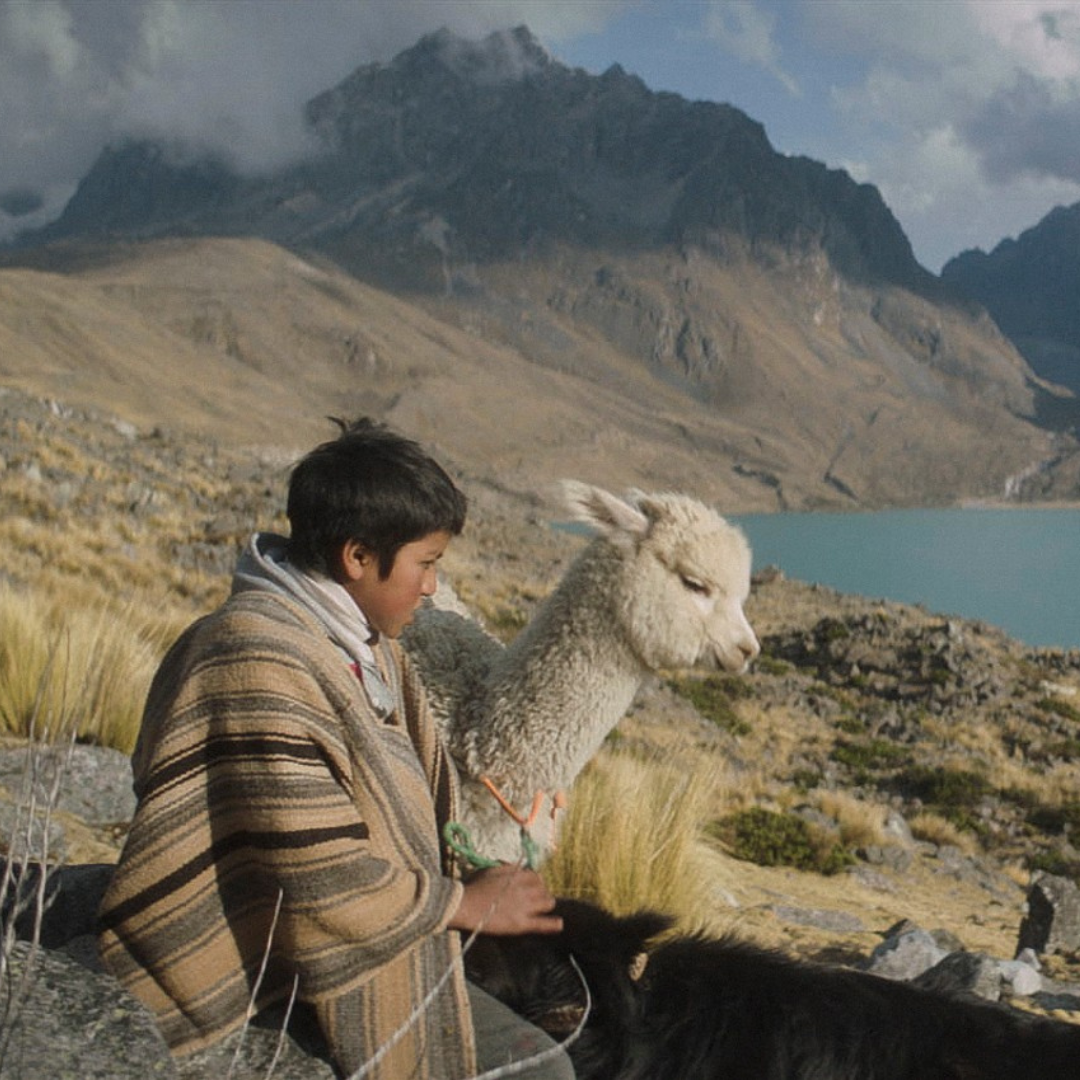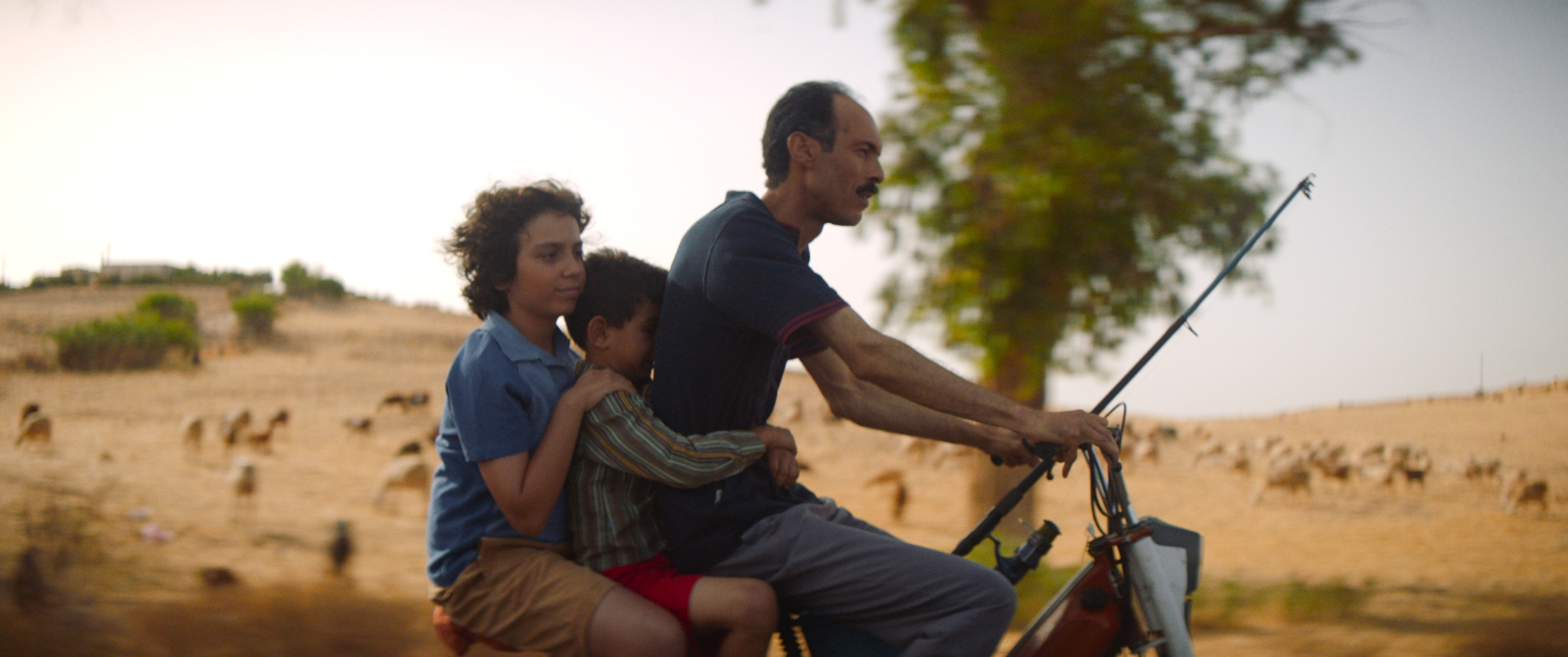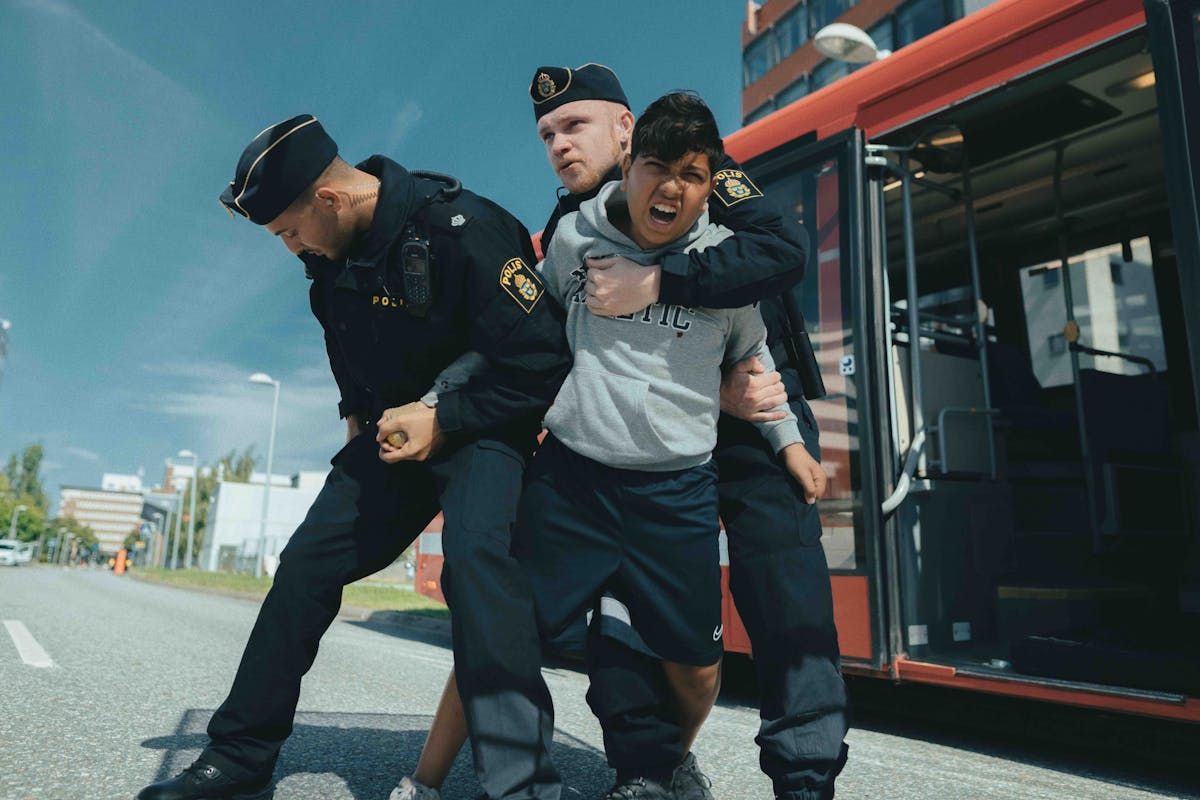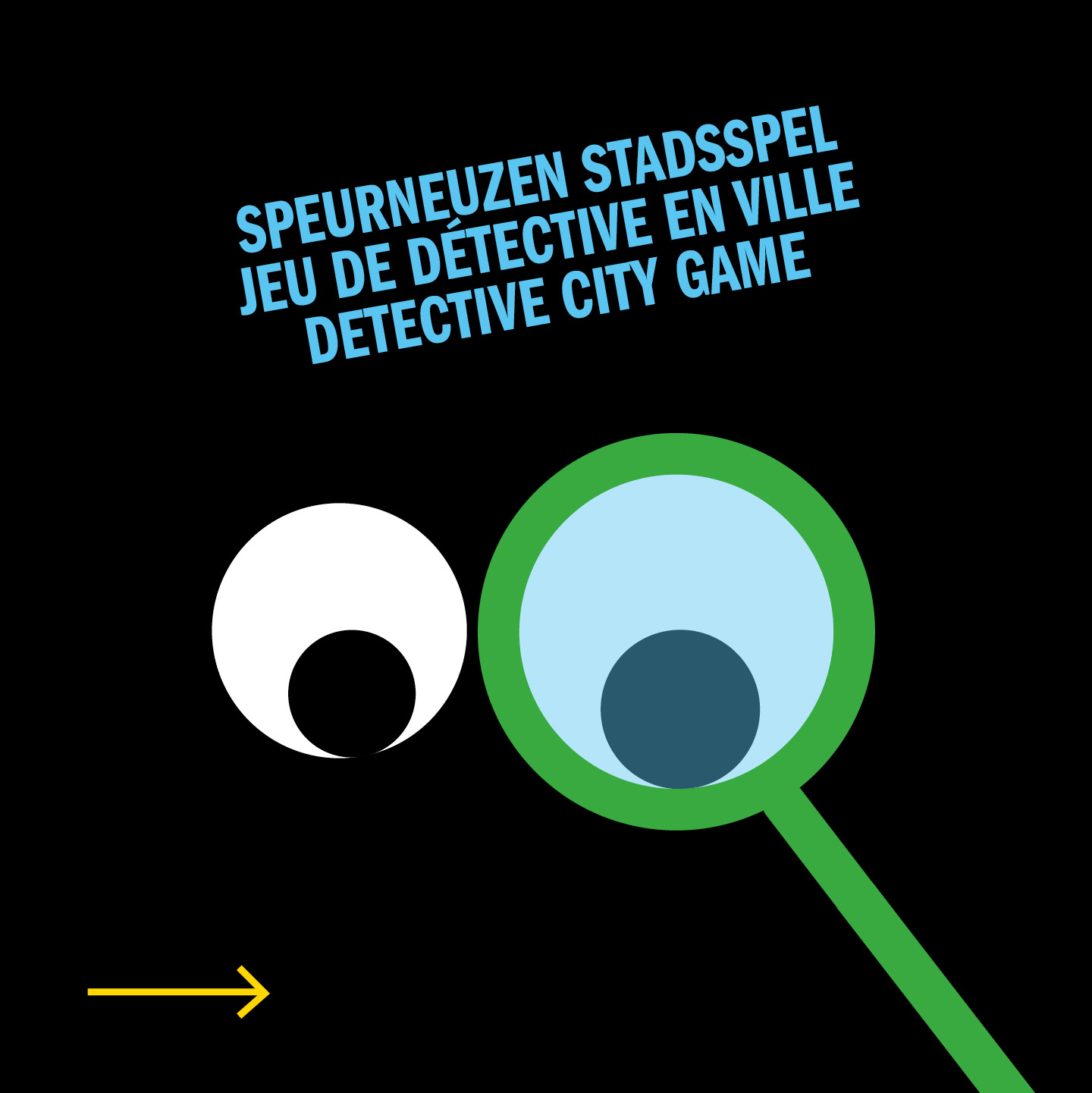“I was surprised when a visitor called it a mess”
A metal bicycle tyre that bursts when it runs over a nail… I find that irresistibly funny! The fragile appearance of the title character, the laconic soundtrack, the consistent use of metal throughout the film’s design… These are the qualities that make ROBOT LEO a worthy ambassador for Estonia, where dry observations and understated reactions are the norm. The same can be said about the two directors, the deadpan sisters Silja Saarepuu and Piret Sigus, aka the Animailm Studio.

Leo the Robot lives with his cat in a cosy, rusty cottage. One fine day, he is expecting a visit from Lilleliisu. Leo wants to make a good impression – the table needs to be set. But the more the big moment approaches, the more Leo’s anxiety grows.
Leo is a metal robot, but does he have a personality, an identity of his own?
Silja Saarepuu: He is a bachelor, sharing his house with a cat. We have two bachelor friends who are always inventing and repairing stuff. Leo is modeled after them.
Piret Sigus: Leo’s house is designed after their houses, full of stuff and loose parts, waiting to be used one day. We compressed those two characters into one Leo.
But the first inspiration was a children’s book.
Saarepuu: ROBOT LEO’S SPECIAL DAY by author and illustrator Pusa is a lovely book for children who are learning to read. Pusa allowed us total freedom; she was happy that we brought her creation to life, with a slightly extended narrative. The book is also the reason why we have two versions of the film: with and without a narrator’s voice.

Why would you need a narrator? It’s not going to get even funnier than it already is.
Sigus: We believe that the film works better with a narrator who reads the original verses from the book in a warm, grandfatherly tone. But some festivals prefer the version without, to overcome language barriers.
Did you work exclusively with metal? Or did you sometimes trick the audience?
Sigus: Analogue robots are made out of metal – that’s crucial! Even the cat is made of a wire spring, covered with textile, and the trees are made out of nails. We cheated a tiny bit with the backgrounds; some smaller trees are made of hot glue.
Saarepuu: We only used a green screen for one scene, and for the title and end credits. “Handcrafted in every detail” is Animailm’s motto. In our previous productions, we used fine textile techniques, like embroidery. This time, we were crafting metal.
How to animate such non-flexible material, and still make it look very much alive?
Sigus: You can animate with simply everything; didn’t you realise that? We work on the glass surface of a multiplane table, and I was worried the metal would scratch the glass, but we saved it with the use of velvet and paper.
Saarepuu: And with the help of Marilli Sokk, our excellent animator, who set all the different elements in motion.

Leo’s legs seem to be endless.
Saarepuu: To make the legs flexible, we constructed little pieces, like shells, that you can stack on top of each other. We had so many loose shells that we could extend those legs endlessly. Like in the shot in which Leo grows all the way till the attic of the house, while the cat is watching down upon him. We called that our DIE HARD shot; Leo rises upward like Bruce Willis in the iconic ventilation shaft scene.
What about his eyes? How to put an expression in that dead material?
Saarepuu: Leo has a wire spring attached to the back of his head, which makes his eyes move simultaneously. We could even open and close them.
Sigus: When Leo is surprised, his pupils grow bigger. They are like little bowls; the more surprised he is, the bigger the bowls. We worked the same way with his mouth, which is like a little radiator.
I was especially fascinated by the objects that, in reality, would never be made of metal: a bicycle tire, a balloon, laundry, etc.
Sigus: We conducted numerous tests to identify the most suitable materials. The balloon was one of the most difficult searches. The outline is made of metal, but we strung balloon fabric over it. If you look closely, you can see that it is slightly transparent.
Saarepuu: Leo is hanging the laundry out to dry as his way of cleaning the house. He wants to find his most beautiful tablecloth – I suppose he washed them first. His entire house is filled with small tables.
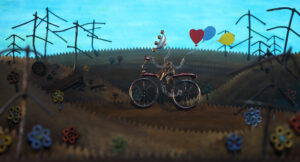
That involved a great deal of welding work. Was that done by one of the bachelors Leo was based on?
Sigus: They were too clumsy for such a meticulous task. We had to bring in a third bachelor. Saarepuu: Just before making the film, he bought himself a micro welding machine. The film was his ultimate practice to find out how the machine worked. He welded hearts on the cups in several stages, with the heart growing bigger each time.
Leo lives in a house with the stairs on the outside
Sigus: For the cat! Leo doesn’t need stairs.
Saarepuu: It looks a lot like the houses of one of those bachelors. I also remembered an image I saw in Romania. There were two wealthy neighbours; one house had four roofs, and his next-door neighbour had five. I suspect that they were competing with each other.
The presence of metal also affects the sound.
Sigus: We gathered all the metal objects in our sound studio and rattled them in front of the microphone. We recorded all that clamour and picked the best results. For instance, when Leo is coming up fast, we used the sound of an old-fashioned drill machine.
A merry ‘poing poing poing’ sound lends Lilleliisu her particularly cheerful character.
Saarepuu: In the bachelors’ workshops, we found a metal string that created this festive noise. We also used a mouth harp – our composer Ramo has this ability to make music with just anything! It makes Lilleliisu look very shiny – the sounds add a bit of spice to her joyfulness, though she looks also happy in silent mode.
How should I imagine your studio, both during and after this movie?
Sigus: It’s a place where people work; it’s not like an office. It looked very normal to us, with metal pieces and scrap lying around everywhere. We still haven’t found the time to clean it up.
Saarepuu: It looks a bit like Leo’s house itself. I was surprised when a visitor called it a mess. It doesn’t look like that to us.
Your last film, THE TURNIP, was made in an underground studio.
Sigus: In a small basement under my garage. My family wasn’t too happy about it; they had had enough of all those people coming and going every day to work on our film. We moved the studio out to a bigger and more expensive place. The more space you have, the more mess you can throw around, but there is nobody to complain about it.
Gert Hermans
